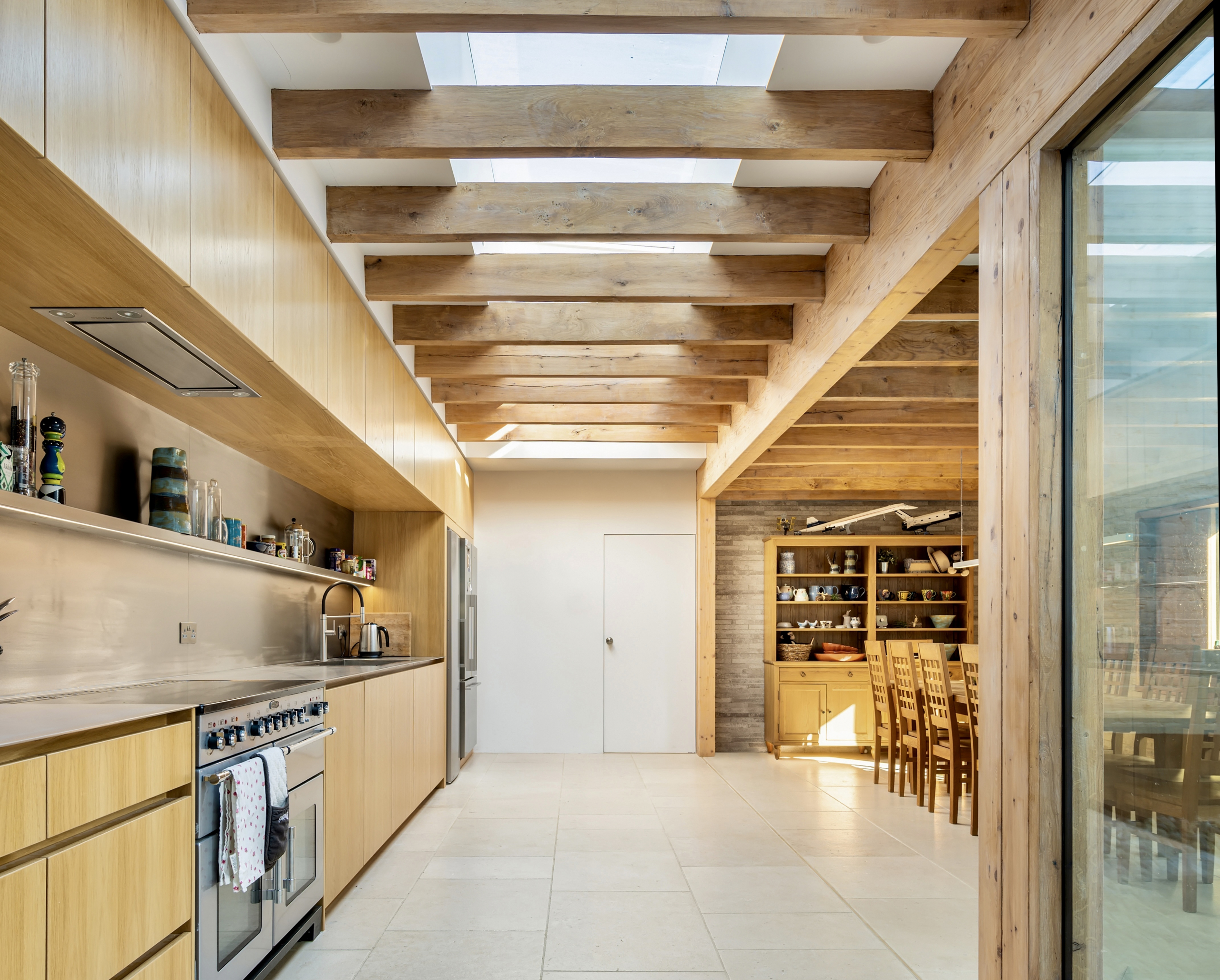Planning an extension, loft conversion or renovation and not sure whether to hire an architect or a builder first? You are not alone. Getting the order right can save you money, reduce risk and make the whole process far less stressful. This guide explains how architects and builders differ, when to bring each one on board and the smartest sequence for typical UK home projects. It also links to practical Design for Me guides and cost tools so you can move forward with confidence.
Extension above by Alex, architect in London on Design for Me. See his full profile and shortlist him for your project here.
Architect vs Builder: What Each One Does
The Role of an Architect
- Primary focus: Design, feasibility, planning strategy, building regulations compliance and detailed drawings
- Key outputs: Concept designs, planning drawings, technical drawings, specifications, tender documents
- When involved: From early feasibility through to on-site contract administration if appointed for later stages
- Risk reduction: Helps avoid costly rework, anticipates planning and building regulations hurdles, designs to your budget
The Role of a Builder
- Primary focus: Construction methods, sequencing, site management, labour and materials
- Key outputs: Pricing against drawings, construction programme, build quality, health and safety, site coordination
- When involved: After the design is defined and approvals strategy is clear, typically once drawings are ready for tender
- Risk reduction: Builds to approved drawings, manages site risks, controls quality and programme
For a clear overview of typical architectural services and stages, see Architects’ services explained.
Who To Hire First: The Short Answer
In most cases, hire an architect first. You need defined drawings and a compliance strategy before meaningful quotes from builders. The architect helps you decide what is possible within your budget and guides planning and building regulations. Once the design is fixed at the right level of detail, you can invite builders to tender on a like-for-like basis.
The Smart Sequence For Common Home Projects
Rear or side extension
- Architect for feasibility and early cost steering. Start with your brief: How to write an architectural brief.
- Check if your proposal could be permitted development. Read What is GPDO and House extension rules 2025.
- Architect develops planning drawings and submits if required. See Do you need planning permission for an extension.
- Technical design and building regulations. See Building control for extensions.
- Tender to builders with coordinated drawings. Use cost guides such as How much does a house extension cost and the House extension cost calculator.
Loft conversion
- Architect to confirm head height, stair strategy, structure and daylight options. See Can I convert my loft.
- Check planning route. Many lofts fall under permitted development, but not all. Read Planning permission for a loft conversion.
- Architect prepares building regs drawings then tender to builders. Cost context: Loft conversion cost.
Kitchen knock-through or internal reconfiguration
- Architect or structural strategy first. Removing walls can be structural and may affect fire safety and means of escape.
- Confirm if approvals are required. Read Open plan building regs considerations.
- With drawings in place, invite builders to price on comparable information.
Why Not Go To A Builder First
Good builders are invaluable, but going to site without defined drawings often results in vague allowances, change orders and delays. A builder can provide high-level ballparks, but accurate pricing depends on coordinated information. Your architect aligns design ambition with budget before you commit to construction.
Costs: How Architect Fees And Build Costs Fit Together
- Architect fees can be percentage, fixed fee or hourly. See Architect costs for an extension and Architects’ hourly rates. For early budgeting, try the Architect cost calculator.
- Build costs vary by scope, specification and location. For context, read House extension cost, Kitchen extension cost and Renovation and extension cost per square metre.
Tip: use cost checkpoints at concept and again at technical stage to keep design and budget aligned. Your architect can help run a light-touch cost review before you tender.
Planning And Building Regulations: Where Each Professional Fits
- Planning strategy: led by your architect, who will advise on permitted development routes, conservation constraints and documentation. See Why planning applications get refused.
- Building regulations: the architect coordinates technical drawings and consultants. Read Approved inspector vs local authority.
- Party wall: separate legal process. Start with Do I need a party wall surveyor and Party wall surveyor cost.
Common Mistakes To Avoid
- Starting builder conversations without any drawings or scope definition.
- Skipping early planning checks, then redesigning later.
- Not tendering competitively. Comparable quotes require coordinated information.
- Assuming permitted development applies without confirming the detailed rules. Read What is GPDO and your local constraints.
- Underestimating time for approvals and surveys. See the project stages overview: From floor plans to final build.
How To Find The Right Architect And Builder
Start with the right designer, then shortlist builders who are experienced in similar residential work and comfortable with your level of detail and programme.
- Find your architect: How to find an architect and Find the best house extension architect in your area.
- See real UK extension talent: 10 of the best extension architects.
FAQs
Can I hire a builder and use their designer or design and build route
Design and build can work well for straightforward projects and a single point of responsibility. You still benefit from clear employer requirements and an independent feasibility review before committing. Read Pros and cons of design and build.
Do I need an architect if my extension is permitted development
There is no legal requirement to appoint an architect, but you will still need building regulations drawings and coordination of structure, drainage and details. See Do I need an architect for permitted development.
What if I only want advice before I offer on a property
Many architects offer pre-purchase consultations to flag structural risks and ballpark costs. See Finding an architect for a house viewing.
Next Step: Post Your Project And Get Matched Today
The easiest way to move from uncertainty to action is to speak to the right professionals. Post your project on Design for Me and receive up to three tailored responses from architects who match your brief, budget and location. It is free to post, and there is no obligation.
Related Guides
- Architects’ services explained
- How much does an architect cost for an extension
- How much does a house extension cost
- House extension rules 2025
- How to write an architectural brief


